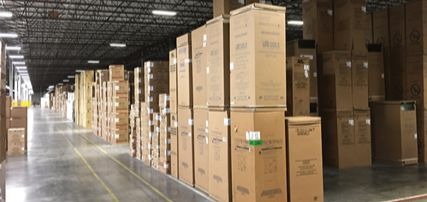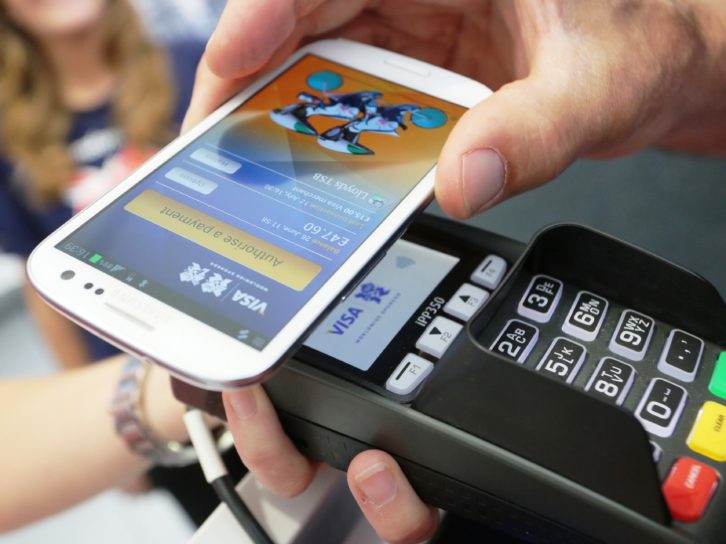
Not meaning to mix holiday references, but why is this holiday shopping season different from all previous holiday shipping seasons?
One word: uncertainty.
The stock market is up. Inflation or recession? Corporate profits are up. Supply chains are stalled. Unemployment is down. War in Europe. The stock market is down. Gas prices are up. Gig economy and quiet quitting. Gas prices are down. GDP is up. Bitterly divided elections. Supply chains are improving. Gas prices are up.
Complicating this economic uncertainty is the stark change in consumer shopping habits, which have inalterably changed thanks to home quarantining during the pandemic. Not only have where and how people shop radically shifted, but how people pay for and receive their goods has as well, along with all their shopping experience expectations. Retailers need to be savvier and more strategic and targeted than ever before to reach, serve, and successfully satisfy their customers, all while selling a wider variety of technologies over a suddenly extended holiday sales season.

“People will be shopping earlier and will continue to move more to online,” opines Lew Brown, partner at bluesalve partners, who notes that 47% of consumer electronics will be bought online this year, a rise of 15% from last year. “Online retailers are planning even earlier. Like starting November 1. I expect brick-and-mortar to follow suit. This makes brand building for direct-to-consumer even more important than ever. [It’s] less and less about the brand of the retailer and more and more about the brand of the product.”
Thanks to this holiday season’s economic uncertainty, one issue haunts most consumer technology retailers more than perhaps any past holiday season: inventory – when to order, and how much. And, in the minds of many, if you haven’t figured that out yet, it may be too late.
 Have inventory/ordering plans changed for this season? “Man o’ man, have they,” Brown understates. “Long lead times still plague vendors and the pressure on ordering VERY early is the requirement of the hour.”
Have inventory/ordering plans changed for this season? “Man o’ man, have they,” Brown understates. “Long lead times still plague vendors and the pressure on ordering VERY early is the requirement of the hour.”
It’s not just longer lead times caused by supply chain or shipping issues plaguing retailer inventory decisions. “Retailers are generally taking a conservative approach to inventory levels due to economic conditions,” offers Chad Evans, VP of merchandising for AVB BrandSource. “Retailers are trying to turn older inventory as economic conditions change. It’s a tricky balance to reduce inventory while maintaining the appropriate stock for Q4 demand.”
For smaller retailers, keeping a closer eye on inventory means being picky. “We are keeping a very close watch on inventory and only going all in on the items that are a sure bet,” says Tom Priola, CEO of Rockford, IL-based Prime Time AV, “and are prepared to pivot quickly if economic conditions warrant.”
“It’s very important that retailers buy deep into their basics,” advises Danielle Savin, senior principal of digital marketing solutions for Capgemini DCX, “and perhaps change their sell-through expectations so they do not run out of stock, and/or have an ecommerce platform that has an excellent recommendation engine to like products.”
Merchandising/Promotion Prep
 One slightly different aspect of selling this holiday season is merchandising. With masks coming off, customers are returning to stores, which increases a retailer’s opportunity to promote in person. “The last couple of holiday seasons have been more subdued promotionally due to lack of inventory, but there has been an uptick in promotion during Q4 2022,” BrandSource’s Evans observes. “This uptick not only reflects an increase in overall product discounts but the number of different models that are being promoted.”
One slightly different aspect of selling this holiday season is merchandising. With masks coming off, customers are returning to stores, which increases a retailer’s opportunity to promote in person. “The last couple of holiday seasons have been more subdued promotionally due to lack of inventory, but there has been an uptick in promotion during Q4 2022,” BrandSource’s Evans observes. “This uptick not only reflects an increase in overall product discounts but the number of different models that are being promoted.”
For smaller retailers such as PrimeAV’s Priola, the change in consumer shopping habits means “more digital and less traditional” merchandising, with mixed levels of vendor support. “We are seeing less support from many of our smaller suppliers,” Priola notes, but “we have had much better vendor support with in-store merchandising this year as consumers return for a more traditional in-store experience with live demos. With the uncertainty of the economy, it appears that everyone is taking a wait-and-see approach before they commit to spending.”
More digital and less traditional also applies to how consumers will pay this holiday season, both in-store and online, which means that the adoption of digital payment systems such as Apple Pay, PayPal, and Google Pay is critical. “Retailers need to update their POS systems so they integrate into wallet-less alternatives,” Savin asserts. “The new Gen Z generation uses their phones as their wallets, and many do not carry credit cards or cash on them. Cash is no longer king.”
Digitally Targeting Your Consumers
 Priola also observes “trends returning to the pre-pandemic challenges where promoting will be more important going forward.” Thanks to the increase in e-commerce, digital methods of targeting and promoting to consumers have increased, for better or for worse.
Priola also observes “trends returning to the pre-pandemic challenges where promoting will be more important going forward.” Thanks to the increase in e-commerce, digital methods of targeting and promoting to consumers have increased, for better or for worse.
To help retailers get a better handle on these modern digital sales, marketing, and promotion techniques, Salesforce recently published a five-part “2022 Holiday Planning Guide for Retailers” to help resellers overcome current uncertain conditions. Among the digital topics Salesforce advises on are:
- invest in modern POS and ERP systems to make sure you can take advantage of all modern digital inventory, sales, marketing, and merchandising opportunities
- use data acquired in your e-commerce effort to better engage, attract, and build loyalty amongst your current customers, which can include early access to Black Friday sales, the creation of personalized offers, expedited free shipping, invitations to exclusive in-store events, even live-streaming sales sessions
- keep your online shopping experience fresh for both desktop and mobile shopping, along with BOPIS (Buy Online, Pick-up In Store), and ROBIS (Reserve Online, Buy In Store) options
- keep inventory levels updated and make sure expectant customers seeking a specific item aren’t ultimately and fatally disappointed
- create more automated in-store shopping aids to help consumers check inventory, pricing, specs, ordering, checkout, and delivery in case you find yourself a little short on human sales staff
- make multiple payment methods available to reduce sales friction, including buy-now-pay-later (BNPL), pay-over-time, or lease-to-own options both in-store and online
- make sure your service department is fully prepared to honestly answer consumer questions and to quickly address consumer concerns, including via “conversational commerce” via messaging channels or live chat, and enable seamless returns
You’ll need to supply some contact information to download the full Salesforce “2022 Holiday Planning Guide for Retailers.”
See also: Another View: Customers Expect The Best From Online In Traditional Retail Experiences













